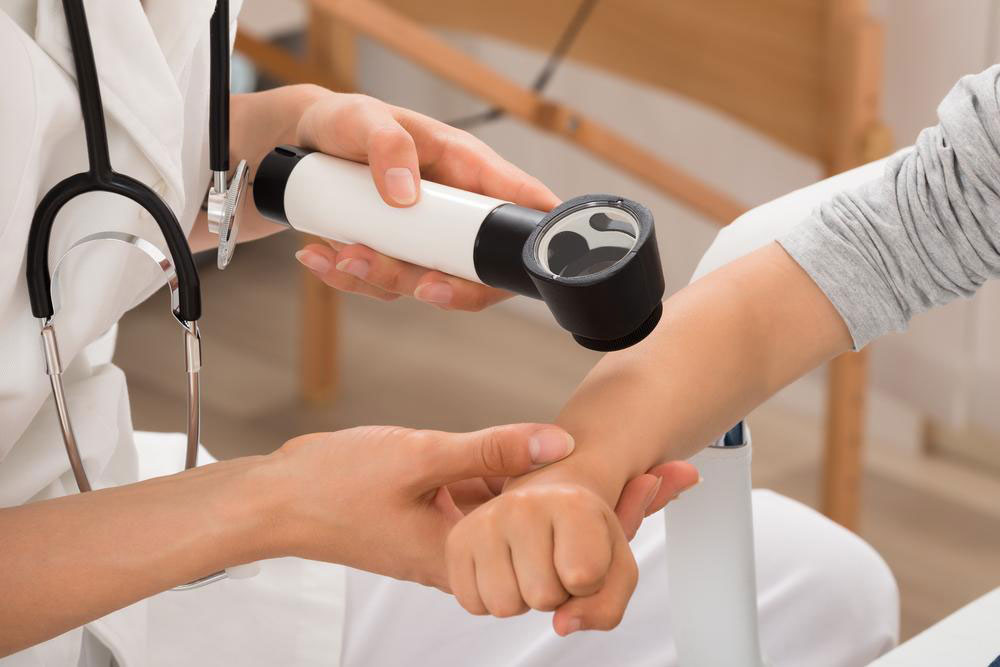Comprehensive Strategies for Managing Atopic Dermatitis Symptoms Effectively
This comprehensive article explores effective strategies for managing atopic dermatitis, focusing on the importance of moisturizers, their types, and additional home remedies. It offers detailed insights on how to choose the right products and adopt skincare routines suited for various severity levels of eczema, aiming to improve skin health and quality of life for sufferers. Whether you have mild or severe symptoms, this guide emphasizes practical solutions and professional advice for optimal management.

Comprehensive Strategies for Managing Atopic Dermatitis Symptoms Effectively
Atopic dermatitis (AD), commonly known as eczema, is a chronic, often relapsing inflammatory skin condition that affects people across all age groups, from infants to adults. It is characterized by a complex interplay of genetic, environmental, and immunological factors. The hallmark symptoms include persistent redness, intense itching, swelling, skin cracking, and dry, flaky skin. These symptoms can significantly impact an individual's quality of life, leading to discomfort, sleep disturbances, and emotional stress. Although there is currently no permanent cure for atopic dermatitis, effective management strategies can considerably control symptoms and improve skin health. Understanding the nature of AD and adopting appropriate skincare routines is crucial for those affected by this condition.
One of the primary indicators of atopic dermatitis is skin dryness. This dryness results from a compromised skin barrier, which makes the skin more susceptible to irritants, allergens, and infections. Regular application of moisturizers forms the cornerstone of AD management. Consistent moisturizing helps restore the skin's natural barrier function, retain moisture, and reduce the severity of symptoms. This article explores various types of moisturizers, their benefits and limitations, and additional home remedies that can aid in controlling AD symptoms effectively.
Moisturizers for atopic dermatitis are typically classified into three main categories based on their formulation and purpose: lotions, creams, and ointments. Each type has unique characteristics that make them suited for different skin conditions and personal preferences. Here’s a detailed review of each category:
Lotions: These are water-based formulations containing a mixture of oil and water. While lotions are lightweight and easy to apply, they tend to evaporate quickly due to high water content. As a result, they are less effective for severely dry or cracked skin associated with AD. Lotions might be suitable for occasional use or on areas that do not require intensive hydration, but they are generally not the first choice for managing persistent eczema symptoms.
Moving on to more effective options, creams and ointments are preferred for their superior hydrating properties and barrier reinforcement capabilities.
Creams: These formulations contain a higher concentration of oils compared to lotions, providing more substantial hydration. Creams tend to be semi-solid and are usually water-in-oil or oil-in-water emulsions. While they are more effective than lotions at restoring moisture and soothe inflamed skin, some cream formulations include preservatives, stabilizers, or fragrances that could potentially irritate sensitive skin. Therefore, consulting with a healthcare provider before selecting a specific cream is advisable, especially for individuals with allergies or very sensitive skin.
For more severe cases or when seeking barrier repair, ointments are typically recommended due to their high oil content and minimal water presence. Understanding their benefits helps in choosing the right product for effective AD symptom management.
Ointments: These are semi-solid preparations that contain little or no water, predominantly composed of oils or petrolatum. Ointments create a robust barrier on the skin surface, locking in moisture and protecting against irritants. The high oil content makes them particularly effective for managing dry, cracked, and inflamed skin associated with atopic dermatitis. Due to their greasy texture, ointments may feel heavy or sticky, which can be a consideration for daily use, especially in hot or humid climates. Nevertheless, their superior efficacy in barrier restoration makes them the preferred choice for many individuals with severe AD.
Some widely recommended products for atopic dermatitis management include:
Aquaphor Advanced Therapy Healing Ointment — known for its excellent barrier-forming properties and suitability for sensitive skin.
Aveeno Eczema Therapy Moisturizing Cream — formulated with colloidal oatmeal to soothe itchy, inflamed skin.
Eucerin Eczema Relief Body Cream — containing colloidal oatmeal and ceramides that repair the skin barrier.
CeraVe Eczema Soothing Body Wash — a gentle, fragrance-free option to cleanse without stripping natural oils.
SheaMoisture African Bath Soap Eczema & Psoriasis Therapy — natural ingredients that help soothe skin irritation.
First Aid Beauty Ultra Repair Lotion — provides intensive hydration with a non-greasy feel.
Neosporin Eczema Essentials Daily Moisturizing Cream — combines hydration with infection-fighting properties.
Despite the discomfort or pain caused by atopic dermatitis, proper use of these targeted treatments and skincare practices can substantially reduce symptoms, promote skin healing, and prevent flare-ups. Alongside moisturizers, other home remedies such as avoiding known irritants, wearing soft fabrics, maintaining a cool and humid environment, and using gentle cleansers can bolster the management of AD. If symptoms persist or worsen, consulting a dermatologist or healthcare professional is essential to customize an effective treatment plan.
In summary, managing atopic dermatitis requires a comprehensive approach that emphasizes moisture retention, barrier repair, and symptom relief. Selecting the right type of moisturizer based on skin condition and personal preference, coupled with lifestyle modifications and medical interventions when necessary, can significantly improve the quality of life for those living with this chronic skin disease. Staying informed about new treatments and products evolved through ongoing research can also provide additional relief and skin health benefits in the long term.





